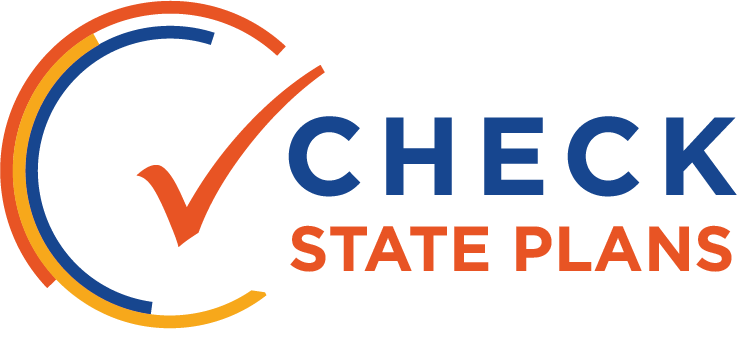Project Background and Overview
Three years ago, with the passage of the Every Student Succeeds Act (ESSA), the federal government shifted the responsibility for identifying and intervening in our chronically under-performing schools to the states. With a limited federal role, one must now look individually at all 50 states to understand how our nation is addressing the achievement gap. The consequences are sobering – more than 9 million students attend schools that do not meet anyone’s standard for what is acceptable. The overwhelming majority of these children are students of color from low-income families.*
We know from the decades-long School Improvement Grant (SIG) program that turning around our lowest performing schools is hard, extremely complex work. There are no silver bullets and we have made little progress to date. Where it works, it requires leadership and community buy-in and, along the way, the ability to make unpopular decisions.
The Collaborative for Student Success (Collaborative) in partnership with HCM Strategists (HCM) set out to identify and lift up the promising practices being adopted in the implementation of ESSA that were worthy of consideration by the field. This work, Check State Plans: Promise to Practice, is a natural progression from last year’s independent peer review conducted by the Collaborative and Bellwether Education Partners of every states new accountability plan, titled Check State Plans.
This analysis is grounded in the collective wisdom and experience of peer reviewers from across the country who have been deeply engaged in this work. These former chiefs, district leaders, school improvement experts, civil rights advocates, English language and special education leaders were recruited to conduct an independent review of the progress made to date on school improvement under each state’s renewed context for school accountability. Only 17 states met our threshold for having enough publicly available information to be reviewed: Arizona, Colorado, Connecticut, Florida, Georgia, Idaho, Illinois, Indiana, Louisiana, Massachusetts, Minnesota, Nevada, New Mexico, New York, North Dakota, Tennessee, and Texas.
Arguably, school improvement is an area of public education reform with one of the least conclusive evidence bases, growing political tension, and a gigantic need for extra resources. This work is not done in a vacuum; compounding the challenges, many states face funding deficits, teacher shortages, and safety issues. Nonetheless, it is concerning that after three years and a quarter of the way through the school year, only 17 states are ready to identify and support their lowest performing schools.
Those involved in this effort believe it is imperative that we shine a bright spotlight on this very concrete and actionable opportunity to truly begin to drive an equity agenda. The hope is that the remaining 33 states and the advocacy community that supports them will consider both the promising practices from their colleagues across the United States as well the recommendations for creating a policy environment where this work can succeed.
Methodology
In spring 2018, the Collaborative partnered with Education First (EdFirst), to first survey and then interview state education leaders to document the timeline and activities states had set in motion to identify and support schools in need of comprehensive support. The results from those interactions with over 40 state leaders were used to identify the states ready for this review. In addition, in August 2018, HCM completed a four-month audit of state department of education websites to gather, at a minimum: the state’s application for districts to receive school improvement funding, the state’s scoring rubric for the application and the state’s guidance for districts or schools to develop and implement their improvement plans. HCM, in partnership with the Collaborative’s leadership team and a group former chiefs and school improvement experts, developed a rubric reviewers used to evaluate states as exemplary, strong, adequate, needs improvement, weak, or not available across eight policy levers:
1. Coherent vision for improving outcomes
2. Strategic use of funding and alignment of resources
3. Rigorous review process
4. Continuous improvement, monitoring and evaluation
5. Evidence-based interventions
6. Capacity building and autonomy
7. Engaging stakeholders
8. Sustaining outcomes
The results by state can be found here.
Troubling Trends
- Equity is not prioritized in half the states. While nearly every state reviewed referenced equity in some way, fewer than half clearly stated equity as a focus and required districts to demonstrate how they would address inequities – such as providing more access to high quality teachers, rigorous curriculum, and enrichment opportunities.
- Many states are not taking their new oversight role seriously.There is not enough emphasis overall on the quality of the application as a whole or on the extent to which the district has shown that it is addressing the needs of the identified school as determined through the comprehensive needs assessment. As a result, it is hard to see how states will be able to distribute funds in a strategic manner or reach the schools and districts with the greatest need.
- It will be hard to tell what’s working. It is unclear in nine states the degree to which they are utilizing a robust, data-driven process to monitor district implementation.
- A strong sustainability plan is missing from all but one of the states reviewed.
Promising Practices from The High Performers
- Louisiana has committed to and clearly articulated a statewide improvement strategy, integrating all their efforts around a vision that every student has access to grade level instruction daily, using a rigorous and high-quality curriculum every teacher has been trained to use.
- Colorado developed a streamlined application to award services and funding. The application is organized into four pathways: exploration supports, district designed and led, offered supports, and continuation. Each pathway has different criteria and methods of awarding funds. The ultimate intent is to develop a robust process of matching schools’ needs with rigorous, evidence-based strategies and adequate resources.
- Nevada explicitly asks that districts include in their application narrative a description of how their chosen strategy or strategies for low performing schools address equity gaps.
- New Mexico requires districts and schools to use NM-DASH (Data, Accountability, Sustainability, and High Achievement), a web-based action-planning, process management tool to help them develop school improvement plans and identify evidence-based interventions. This system aligns the states accountability and educator evaluation systems with the school improvement efforts. Districts and schools are required to check in with officials continuously and to use data from NM-DASH to gauge the effectiveness of the improvement strategies.
- Tennessee’s school improvement application serves as a step-by-step primer for districts in how to create a detailed needs assessment, identify common themes, conduct a root cause analysis to prioritize the areas of greatest need, and then develop goals and an implementation plan to address each high-priority area.
Leadership Approaches
Three leadership approaches emerge from our analysis. No doubt, all three approaches have strengths, weaknesses, and the ability to succeed. The key is to be explicit about the philosophy and then to follow through with a coherent, measurable plan that is known by all of the stakeholders.
The State Leadership Approach:
Chiefs in these states have outlined an explicit and coherent vision for school improvement, and for the most part have integrated it throughout all their efforts. They’ve strived for consistent messaging around school improvement, developed a system to monitor the progress, and they’ve used competitive funding to prioritize resources to districts that have demonstrated a commitment to real improvement. The state is leading from the front and communicating a need for urgent change. Peers paid special attention to the degree to which these states’ theories of action were front-and-center throughout all of their school improvement materials and articulated an equity focus. These states are Louisiana, Massachusetts, New Mexico, and Tennessee and on average they scored the highest in our review.
The Partnership Approach:
These states view themselves as partners with districts and try to walk the line in acting as both a coach and a referee. They focus on enhancing district capacity throughout the improvement process to make decisions and serve all students. Rubrics are often used to guide conversations around the improvement process rather than grade the quality of the applications and state staff generally work with districts to complete the plan if it lacks initially. Many of these states are establishing progress monitoring check-ins with districts, where the conversation is geared around “how can we help.” Peers looked particularly at whether these states clearly defined roles and responsibilities for school improvement at the state, district, and school levels. There are five states in this category: Connecticut, Idaho, Minnesota, North Dakota, and Nevada.
The District Leadership Approach:
These states view their role as creating a foundation for improvement and expect district leaders to take primary responsibility for developing and implementing their school improvement strategy. As a result, these states often employ very specific school improvement frameworks, planning tools, or funding guidance. These states lean heavily on a local needs assessment or school improvement application to make funding determinations, and will generally point districts to evidenceforessa.org or a state-created resource hub for intervention recommendations, but will not prioritize a specific strategy. Peers paid special attention to the degree to which these states had completed a high-quality suite of school improvement guidance and foundation documents and made it publicly available. There are eight states in this category: Arizona, Colorado, Georgia, Florida, Illinois, Indiana, New York and Texas.
Conclusion
For some, this report will confirm their fears that the wide latitude under the new law will lead to the path of least resistance. There is no doubt that in some states that is true. However, our hope is that this review is a useful tool to state education leaders, educators, stakeholders and advocates as they grapple with the right leadership models, policies, and interventions to dramatically improve their lowest performing schools. In a noisy political environment that changes daily, this is one equity gap that if given the prioritization, rigor, energy, and resources it deserves, could be closed.
*The Every Student Succeeds Act Creates Opportunities to Improve Health and Education at Low Performing Schools(Rep.). (2017, August). Retrieved October, 2018, from Health Impact Project website




